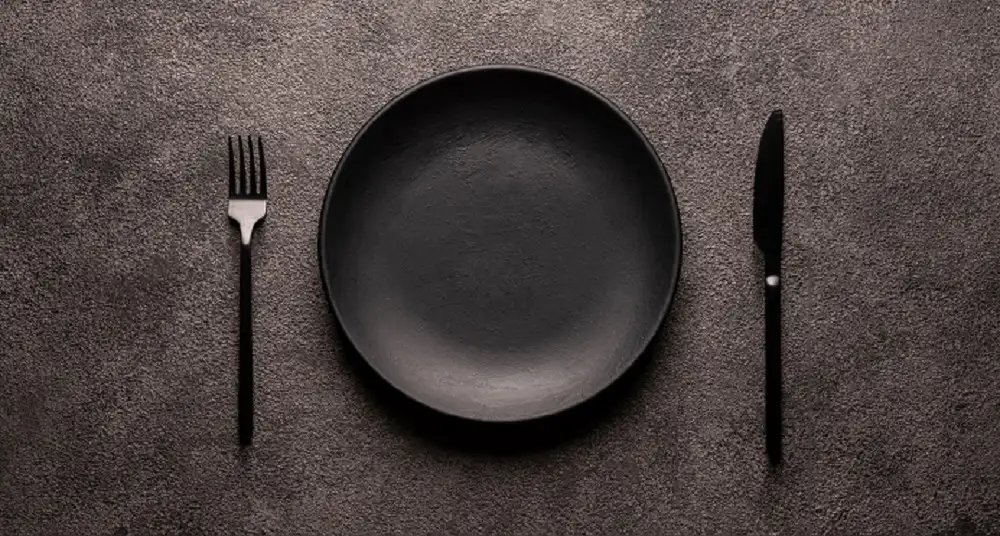To stay ahead in a dynamic and demanding market, restaurants must find new ways to maximize their revenues. Enter restaurant revenue management. From better pricing and inventory management to marketing and customer relationship strategies, these are some of the restaurant industry’s tools and tactics to increase sales and profitability.
Many restaurant owners hire hospitality industry consulting experts to develop a restaurant revenue management plan to determine how to improve their restaurant’s performance. You’ll find many of their restaurant revenue management strategies below.
What Is Restaurant Revenue Management?

Restaurant revenue management (RRM) is the strategic process of optimizing a restaurant’s earnings by maximizing revenue potential while ensuring optimal customer satisfaction.
RRM was first used in the 1980s when airlines used dynamic pricing to optimize profit. Then it trickled into the hotel industry, and now it’s widely used by restaurants.
The ultimate aim of RRM is to achieve the best results using the least amount of resources. Often this means optimizing menu profitability and inventory management, refining table turnover time, and offering strategic promotions during lulls in occupancy.
Revenue management software and historical sales data, among other tools, are used to tailor RRM strategies to individual business needs.
Why Revenue Management Is So Important

Effective restaurant revenue management balances optimal traffic, sales, and service by:
- Increasing prices during peak times to capture more revenue from high-paying customers;
- Offering discounts during off-peak times to fill seats that would otherwise be empty;
- Managing table turnover to increase the number of customers you serve daily;
- Segmenting customers to target your pricing and promotions to different types of clientele;
- Optimizing inventory to reduce food waste and improve your bottom line;
- These tactics result in a more reliable dining experience, enhancing customer satisfaction and maintaining your establishment’s competitiveness.
Just how important is revenue management in a restaurant? It’s paramount for long-term survival.
Developing Restaurant Revenue Management Strategies in 12 Steps
Through performance measurement, menu engineering, capacity optimization, and more, you can successfully develop and implement a restaurant revenue management strategy to boost your restaurant business profits.
1. Establish Baseline Performance
To calculate your baseline, you need to know the revenue generated per individual restaurant seat.
- Total Revenue ÷ Seat Hours (the result of multiplying the number of seats in your restaurant by the duration of your operating hours).
For example, if your restaurant records $8,000 in revenue during a given evening, with 80 seats available, and your establishment operates for 5 hours, the process would be as follows:
$8,000 ÷ (80×5)
$8000 ÷ 400
Leading to $20 per seat.
Subsequently, you can utilize this information to assess whether adjustments are necessary, such as elevating the seat average, expanding seating capacity, adjusting pricing, and other strategies to increase how much revenue you make.
2. Analyse Demand to Boost Restaurant Revenue

Once you know why people like your restaurant and want to return, you can make improvements. For example, do you need more customers to spend or money, or should you add extra seats?
Traffic
First, you need to know how many patrons visit your restaurant, what your busiest arrival periods and meal intervals are, not to mention the average size of guest groups.
By comparing metrics such as table allocation and party sizes, you can create an ideal mix of table proportions, effectively shielding against the risk of revenue loss.
Sales
Next, your sales data offers valuable insights into the revenue generated from each diner. Utilize Average Check per Cover (APC) to gauge the expenditure of every guest during their restaurant visit.
Average Check per Cover (APC) can be calculated using the formula:
- APC = Total Sales / Total Number of Customers.
Guest Satisfaction
Lastly, analyze your restaurant’s guest experience. There are two ways to figure this out: seeing how long people eat and noticing the types of things they order.
The longer their dining duration and the money they spend per hour, the better the service. By understanding which guest tribes (groups of guests who order similar things) spend the most money, you can make more restaurant profits.
For example, do your patrons often order dessert or just main meals? Is there potential to sell them starters or after-dinner drinks?
3. Optimize Table Turnover Rate

Table turnover rate measures how often a new party is seated at a table after the previous party has left.
- Table Turnover Rate = Total Number of Customers Served / Number of Tables
For instance, if your café attended to 150 patrons daily and operated 15 tables, your table turnover rate would be 10 (150 customers / 15 tables = 10 turns per table). Consequently, each table accommodated ten distinct customers or groups throughout the day.
Your ideal table turnover rate depends on your establishment type, as restaurants with higher price points typically have a lower table turnover rate than restaurants with lower price points.
To improve your table turnover rate, you can:
- Use an online reservation system: Customers who can make reservations online are more likely to follow through with their plans, increasing sales;
- Optimize room layout: Bar or counter seating is a valuable addition to restaurants, providing temporary seating for customers awaiting table availability, which is particularly beneficial during busy periods;
- Simplify the menu: A short menu simplifies decision-making for customers and helps kitchen staff focus on food quality and preparing the essentials.
4. Outline a Strategy to Increase Restaurant Revenue

There’s no definitive formula for boosting your restaurant’s profitability. Instead, the optimal strategy will elevate demand drivers (traffic, sales, and customer satisfaction) while aligning with your business objectives.
At this point, it’s essential to define the goals to chart the path to improved revenue within a specific timeline. Consider adopting SMART goals that are Specific, Measurable, Achievable, Relevant, and Time-bound.
For instance, if your objective is to increase money spent per customer by 10%, you will likely train staff to upsell alcohol pairings, starters, or desserts. It’s useful when developing a restaurant revenue management strategy to use SMART goals because they eradicate ambiguity and provide distinct deadlines for achievement.
Supercharge Your Marketing Strategy
Drive growth with Cultivate Advisors’ comprehensive marketing management solutions. Our expert marketing automation consultants will optimize your campaigns for maximum impact. Get in touch with us today!
Enhance Marketing Management5. Track KPIs
The most effective approach to measuring against internal goals and industry benchmarks involves scrutinizing your restaurant’s Key Performance Indicators (KPIs).
By doing so, you can better allocate your resources, such as staff, budget, and time. Furthermore, collecting KPI data creates a baseline for educated predictions on industry trends.
Sales, customer satisfaction, and the cost of goods are three key performance indicators, among others, you should track:
- Sales: How much you sell impacts key metrics like break-even point and gross profit.
- Historical sales: This specific key performance indicator helps identify trends and measures against past performance to produce accurate forecasting that reduces costs.
- Labor costs: Consider wages, taxes, and employee benefits. How do they compare against prime expenses (labor and the cost of goods)?
- Cost of goods: Can you decrease the cost of goods sold without compromising quality?
- Turnover rate: How high is staff turnover? Lower staff turnover means less time training new employees and more time to focus on other things.
- Server benchmarks: How much does the average guest spend? How many guests are served per server per hour?
6. Design Your Menu for More Revenue

Menu design is an integral part of running a successful restaurant, as it influences customers’ decisions and drives profit for your business.
Structure Your Menu Strategically
You can improve menu profitability by categorizing your dishes into four groups: stars, plow-horses, puzzles, and dogs.
- Stars: These dishes are both popular and profitable. They should be strategically placed on the menu to entice customers to order them.
- Plow-horses: These dishes are popular but not as profitable as stars. They may be driving foot traffic to the restaurant, so keeping them on the menu is important. Modifying these dishes to make them more profitable is a good idea, such as sourcing ingredients from different suppliers or reducing portion sizes.
- Puzzles: These dishes are not popular but are profitable. Try to transform them into customer favorites by making changes, such as reducing the price or changing the flavor profile.
- Dogs: These dishes are neither popular nor profitable. Remove them from the menu unless they appeal to a crucial customer segment.
Increase Profit with High-Margin Dishes
The Golden Triangle is a term used in menu design to describe the three areas on a menu that diners’ eyes are most likely to see first. These areas are the top left corner, the top right corner, and the menu’s center. Placing your most profitable menu items in these areas increases the chances that diners will see and order them.
Keep Your Menu Simple
Restaurants have limited menus for various reasons, including profit, decision fatigue, food quality, and food waste.
A limited menu allows you to invest more time and resources into perfecting a smaller number of dishes, ensuring that the food is always fresh and of high quality. And it makes it easier for customers to place orders.
Additionally, having fewer menu items means you are less likely to throw away food that customers don’t order, saving money on food costs and inventory.
Use Menu Design to Cross-Sell and Upsell Items

Cross-selling is a powerful way to increase revenue. To ensure your staff is equipped to cross-sell, provide training sessions and actively encourage their efforts.
For example, consider recommending specific cocktails or wines to enhance particular meals by including them as a suggestion beneath the menu descriptions of corresponding dishes.
You can also implement other marketing and promotional efforts like buy-one-get-one-free on higher-ticket dishes.
Highlight Profitable Dishes
Menu callouts are visual clues on a restaurant’s menu that draw attention to certain dishes or encourage customers to order specific items.
They typically highlight premium items, such as featured appetizers or entrées, current specials, valued combinations, and desserts.
They are usually featured in a large, conspicuous typeface and accompanied by a description or a promotional image.
7. Adjust Pricing

Depending on your specific goals, target market, desired profit margin, and competition, you can price our menu in several ways.
Common pricing strategies include:
- Cost-plus pricing: Add a markup (between 20% to 30%) to the cost of your ingredients to arrive at a selling price.
- Competition-based pricing: Set prices based on what other restaurants in the area charge for similar dishes.
- Value-based pricing: Determine prices based on the perceived value of the dish to the customer.
- Psychological pricing: Use psychological factors to influence customers’ perceptions of prices. For example, you might price a dish at \$9.99 instead of \$10 to make it seem like a better deal.
When implementing restaurant revenue management pricing strategies, it’s important to remain flexible as prices will change over time due to the cost of ingredients, competition, and economic conditions. Be prepared to adjust your prices as needed.
8. Streamline Service with Mobile Ordering Tablets
Mobile ordering tablets allow customers or servers to place food and drink orders more conveniently than ever before.
They save staff and customers time and hassle and help restaurants improve service quality, as they can process orders more quickly and accurately.
For these reasons, they are becoming increasingly popular, offering convenience, accuracy, speed, data collection, and improved order processing.
9. Enhance Personnel Management

With an automated online scheduling platform, you can create employee schedules quickly and accurately in a fraction of the time it takes to get through Excel spreadsheets.
Not only that, but some online systems can take employee shift requests, ensuring that the schedule better meets the needs of your team.
Additionally, online solutions include reminders and notifications so restaurant managers can easily see when changes are made and approved, ensuring they are always documented.
10. Overhaul Inventory Tracking
Restaurants often have trouble with inventory tracking, which can be time-consuming, tedious, and frustrating.
Without a structure in place and accurate data, you’ll miss out on opportunities to reduce costs and boost profits. An inventory tracking system can solve this problem.
It will streamline the inventory process, helping to cut down on waste, over-buying, and over-portioning, leading to increased profits and reduced costs.
11. Implement Digital Time Tracking
You can implement proper digital time tracking using cloud-based scheduling and time-tracking software. This software helps restaurants and their employees track attendance, clock-in/clock-out times, workers’ hours worked, and any overtime.
With it, you can instantly monitor employee data and set up notifications to detect any discrepancies in employee data and alert employers immediately.
Additionally, employee-facing mobile apps offer employees access to their current and past schedules, hours worked, and the ability to track their attendance. This software helps streamline and ease administrative costs for restaurant managers and staff.
12. Maximize Restaurant Capacity

Restaurant capacity management is the process of overseeing the maximum occupancy of the restaurant at any given time. It entails optimizing how many customers come in and out of your restaurant to ensure adequate space, seating, and a balanced customer flow, not too crowded or empty.
Capacity management also means adjusting staff schedules according to the busiest and quietest times and budgeting and forecasting future bookings.
You can improve capacity management by:
- Increasing seating capacity: If you have the space, add more tables and chairs to your restaurant. Also, consider adding banquettes or booths to accommodate more guests than traditional tables;
- Extending operation hours: If you’re only open for lunch and dinner, you can increase your capacity by opening for breakfast or late-night service;
- Offer take-out and delivery: Take-out and delivery are great ways to increase capacity without increasing your seating. You can also offer catering services, which can be a great way to serve large groups of people.
Final Thoughts: Better Restaurant Revenue Management Plans & Strategies
In today’s competitive restaurant industry, having a strong revenue management strategy is more critical than ever. Following the tips in this blog can improve your café, bar, or even hotel restaurant’s profitability and ensure long-term success.
We can assist if you need help pinpointing and developing your restaurant revenue management strategies. Our sales strategy consulting team has helped more than 2,000 business owners improve their bottom lines. Why not schedule a consultation today?
Optimize Your Sales Operations
Drive revenue and streamline processes with Cultivate Advisors’ sales operations solutions. Our experienced sales operations consultants will help you achieve peak performance. Connect with us today!



